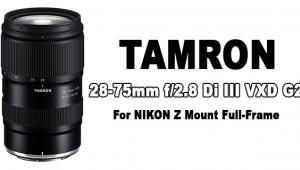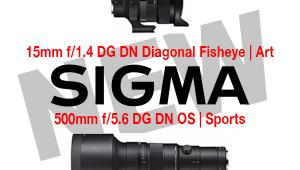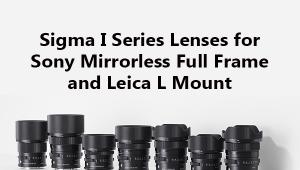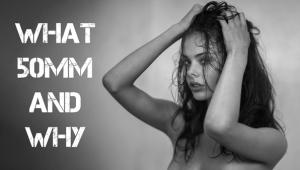Something Old, Something New; Are “Older” 35mm Film Camera Lenses Suitable For D-SLR Cameras?
If, like many Shutterbug readers, you have a film SLR camera plus several interchangeable lenses, you might be wondering if you can use those lenses with your new D-SLR camera of the same, or even different, brand. Questions arise: Will the older film-era lenses work? If so, are there any limitations? Do they need factory modifications so they will work properly? And even if everything seems to fit together, are you degrading the quality of your images by using older gear on newer imaging devices?
There have already been several generations of products introduced since the move to D-SLR cameras. Each generation has introduced a greater distance between electromechanical communication with the camera body to direct electronic communication. Changes have been introduced in practically every component of the camera system, including metering, autofocusing, shutter control, image stabilization, etc.
To research this article I contacted many firms, including major 35mm SLR manufacturers and independent lens manufacturers who offer lenses in several major camera brand mounts. Here, by manufacturer, is what I discovered.
Canon
All models of Canon EF lenses work with their current D-SLR system cameras with, of course, the effective change in coverage from use of the lenses with sensors smaller than 35mm size. Even older Canon FD lenses can be used, but one of two versions of the FD-EOS Lens Mount Converter is required.
 |
|
|
The FD-EOS Macro Lens Mount Converter was offered through Canon dealers. It was compatible with all FD lenses and accessories—but was suitable for macro use only. This mount was discontinued but might still show up on the used market.
The earlier original FD-EOS Lens Mount Converter contained an extender, which multiplied the focal length by a factor of 1.26x—but it was only usable for most FD lenses with a focal length of 200mm and longer. This limitation was due to a protruding front element on the converter’s tele-extender, which would interfere with shorter focal-length lenses. This latter converter was not sold through dealers but was available only to members of the Canon Professional Services program. Both converters when used with older FD lenses on Canon D-SLR cameras require that the lens has to be stopped down manually since the diaphragm operation is manual and there is no autofocus confirmation.
With either converter used with an older FD-mount lens, there are two options for exposure control: 1) Manual mode when you set the shutter speed and then manually stop down the lens or 2) Use Stop-Down AE when you stop down the lens and the camera sets the shutter speed automatically.
Leica
The new Leica S-System S2 D-SLR camera is an entirely new system and it does not accept the old Leica R 35mm SLR lenses. Leica’s earlier digital R-System camera production was recently terminated. There are no Leica cameras sold that support R lenses. There are third-party firms that supply adapters to use these lenses on Canon and/or Nikon bodies.
The Leica digital M9 rangefinder camera can accept practically any M camera lens produced since the M-System was introduced way back in 1954. To provide digital M cameras with the necessary EXIF data they offer a 6-bit coding that can be retrofitted on older lenses.
Nikon
Detailed information on the compatibility of their older “legacy” Nikkor lenses with today’s Nikon D-SLR cameras can be found at: http://support.nikontech.com/app/answers/detail/a_id/14439.
In summary, all non-AI Nikkor lenses cannot be used on any D-SLR or even late-model film SLR camera. Manual focus AI lenses with Aperture Indexing levers can be used on D-SLRs, but with a few exceptions. The higher models of D-SLR cameras (such as the D300, D200, D3, D2, and D1) can meter with these lenses, but when used with older consumer-oriented bodies (such as the D60, D40, D80, and D70) the exposure will have to be determined and set manually.
 |
|
|
Nikkor AF lenses use a mechanical coupling between the lens and camera for focusing. The focus motor is located inside the camera but drives the lens’ focusing through gears. These lenses can be used on any D-SLR that has a built-in focus motor. The only cameras not currently having a focus motor are the D5000, D3000, D60, and the entire D40 series of cameras.
Nikkor AF-S and AF-I lenses differ from the AF lenses since they do have a built-in focus motor thus they can be used on any Nikon camera body even if it does—or does not—have a focus motor. This type of lens is required for autofocus operation with the D5000, D3000, D60, and D40 series of bodies.
Nikon indicates they cannot comment on the compatibility and image quality of third-party lenses having a Nikon mount. They suggest if your lens worked satisfactorily on an older Nikon film camera that you should be able to use the information provided earlier to determine the suitability for use with a new D-SLR camera. Considerable additional information about Nikkor lenses is included on their website which should be a must read for anyone contemplating using older Nikkor lenses with D-SLR cameras.
- Log in or register to post comments

















































